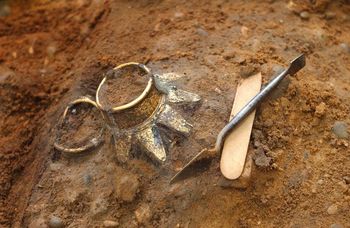Metadata and documentation
Rich, standardised metadata is essential to ensure archived data can be effectively reused. The Tree-Ring Data Standard provides a robust data model around which this metadata can be stored. A full description of the TRiDaS data model along with all the fields that it supports, can be found in the original publication by Jansma et al (2010).
While the more metadata the better, there may not be the time and resources to comprehensively store all metadata. This is often especially true when attempting to retrospectively archive existing collections where the metadata is not easily accessible or perhaps completely missing.
To be as accommodating as possible few of the many data fields defined in TRiDaS are marked as mandatory. However, there are a number of optional fields that are considered extremely desirable when archiving dendroarchaeological data. A list of all mandatory and strongly recommend fields are provided in table 3.
Table 3 – Metadata fields that are mandatory or strongly recommended when archiving dendrochronological data.
| Field | Mandatory | Definition |
|---|---|---|
| project.title | Yes | Name of the project |
| project.identifier | Yes | Laboratory project identification such as a report number |
| project.type | Yes | Examples include: dating; provenance; wood technology, vegetation reconstruction; climate study |
| project.laboratory | Yes | Name of the dendrochronological research laboratory |
| project.category | Yes | One of: former vegetation; archaeology; building history; ship’s archaeology; art/furniture; actual vegetation |
| project.investigator | Yes | Name of the principal investigator |
| project.period | Yes | When the dendrochronological project took place |
| object.title | Yes | Name of the object being analysed e.g. the name of a ship, archaeological site, building or painting. |
| object.type | Yes | Functional description: building (church, house etc.) water well, painting, musical instrument (and type), ship (and type), forest |
| object.latitude | No | Latitude of the object in WGS84 decimal degrees |
| object.longitude | No | Longitude of the object in WGS84 decimal degrees |
| element.title | Yes | Name of the element |
| element.taxon | Yes | The most detailed taxonomic name known: species, genus, family etc, preferably from the Catalogue of Life |
| element.latitude | No | Latitude of the element in WGS84 decimal degrees |
| element.longitude | No | Longitude of the element in WGS84 decimal degrees |
| sample.title | Yes | Name of the sample |
| sample.type | Yes | Method that was used to take a sample from the element e.g. core, section. |
| sample.samplingdate | No | Date the sample was taken |
| radius.title | Yes | Name of the radius |
| radius.pith | Yes | Whether the pith is present or absent |
| radius.sapwood | Yes | One of: n/a; absent; complete or incomplete |
| radius.bark | Yes | Whether the bark is present or absent |
| measurementSeries. title | Yes | Name of the measurement series |
| measurementSeries.measuringmethod | Yes | What method was used to measure the sample |
| measurementSeries. variable | Yes | Measured variable e.g. ring-width, earlywood, latewood etc |
| derivedSeries.type | Yes | If the series has been derived from other series, what type of series is it e.g. chronology, object curve etc |
Although the TRiDaS data model (i.e. the structure and data fields) is typically implemented as XML files that comply to the TRiDaS XML schema, it can also be followed in other less formal ways. For instance the Heidelberg data format enables users to store user-defined metadata fields so it is possible to use the TRiDaS fields definitions as additional user-defined fields within a Heidelberg file. If you are using the TRiDaS data model in such a manner, take time to get to know the structure of the model along with its deliberately introduced formatting restrictions. For example, TRiDaS extends the Geography Markup Language (GML) for storing location information. If you are storing coordinates, take care to format them in a logical and consistent manner and to record associated information such as the datum. TRiDaS also defines a number of dictionaries for common terms. These dictionaries should be followed wherever possible.



